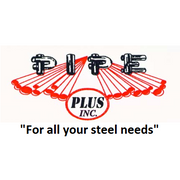
Feeding your cattle is a significant part of your budget, which means you want to utilize the best practices of the industry. Using the right strategies with hay feeders will save you time and money, avoid waste, and keep your animals healthy. Try each of the tips below for effective results.
Best Practices for Feeding Cattle
1. Use Hay Feeders
A large amount of high-quality hay is wasted every year when it falls to the ground and gets trampled underfoot. Hay feeders secure it up off the ground, so it won’t be blown loose or easily pulled out by the animals. You’ll be able to reduce your waste without needing to provide feedings in small amounts—simply place everything in the feeder and let the cattle forage. Along with saving on hay, you’ll also reduce your labor costs from cleaning up.
2. Feed in Well-Drained Areas
 Damp conditions are undesirable for any kind of feed. If your cattle drop hay on the ground while foraging, it will become unpalatable once it gets wet. That wet hay trampled underfoot then becomes a prime breeding ground for insects. To avoid this, feed only in dry areas with ample drainage.
Damp conditions are undesirable for any kind of feed. If your cattle drop hay on the ground while foraging, it will become unpalatable once it gets wet. That wet hay trampled underfoot then becomes a prime breeding ground for insects. To avoid this, feed only in dry areas with ample drainage.
3. Prevent Mud
Feeding areas, even with good drainage, tend to become muddy as the herd gathers around one area. Prevent this with one of two strategies. You can move your feeders and grain bins around from time to time so that the pasture gets even wear. If you want to keep your feeding in a single location, lay down crushed gravel to protect the ground and keep it dry.
High-quality hay feeders you can rely on will make all the difference in your feeding experience. The fabrication shop at Pipe Plus is known for effective solutions at reasonable costs to ranchers throughout Willow Springs, MO, and the surrounding areas. This dependable steel processing team gets every project done on time to ensure you don’t have any delays. Contact them online or at (417) 469-5292 to request a proposal.
About the Business
Have a question? Ask the experts!
Send your question

